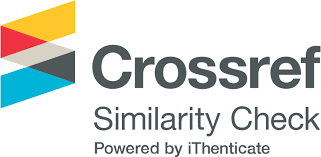REACTIVE INVESTING: THE PSYCHOLOGY OF MARKET RESPONSES AND ITS IMPACT ON LONG-TERM FINANCIAL STABILITY
DOI:
https://doi.org/10.59415/mjacs.v3i2.255Keywords:
Reactive investing, behavioral finance, market psychology, investor sentiment, financial stability, herd behavior, market volatility, cognitive biasesAbstract
Reactive investing, driven by psychological biases and emotional responses, significantly influences financial markets, often leading to short-term volatility and long-term instability. This study examines the behavioral underpinnings of reactive investing, exploring how cognitive biases such as herd mentality, loss aversion, and overreaction to news shape market dynamics.The paper investigates the systemic risks of reactive investing, such as misallocated capital, eroded investor confidence, and heightened financial fragility. To mitigate these effects, the study discusses potential strategies, including investor education, regulatory safeguards, and long-term investment approaches that counteract impulsive decision-making. The study concludes with recommendations for future research, emphasizing the need for advanced sentiment analysis tools and cross-cultural studies to better understand market behavior. By bridging psychological theory with financial practice, this paper contributes to a deeper understanding of how reactive investing impacts economic stability and offers pathways toward more resilient markets.
Downloads
References
Acemoglu, Daron, Asuman Ozdaglar, and Alireza Tahbaz-Salehi. 2015. "Systemic Risk and Stability in Financial Networks." American Economic Review 105 (2): 564–608. DOI: 10.1257/aer.20130456 DOI: https://doi.org/10.1257/aer.20130456
Allen, F., Babus, A., & Carletti, E. (2012). Asset Commonality, Debt Maturity and Systemic Risk. Journal of Financial Economics, 104(3), 519-534. https://doi.org/10.1016/j.jfineco.2011.07.003 DOI: https://doi.org/10.1016/j.jfineco.2011.07.003
Avramov, D., Cheng, S., & Metzker, L. (2023). Machine learning vs. economic restrictions: Evidence from stock return predictability. Management Science, 69(5), 3135-3165. https://doi.org/10.2139/ssrn.3450322 DOI: https://doi.org/10.1287/mnsc.2022.4449
Barber, B. M., & Odean, T. (2000). Trading is hazardous to your wealth: The common stock investment performance of individual investors. Journal of Finance, 55(2), 773-806. https://doi.org/10.1111/0022-1082.00226 DOI: https://doi.org/10.1111/0022-1082.00226
Barber, B. M., & Odean, T. (2001). Boys will be boys: Gender, overconfidence, and common stock investment. Quarterly Journal of Economics, 116(1), 261-292.https://doi.org/10.1162/003355301556400 DOI: https://doi.org/10.1162/003355301556400
Barberis, N., Greenwood, R., Jin, L., & Shleifer, A. (2018). Extrapolation and Bubbles. Journal of Financial Economics, 129(2), 203-227. https://doi.org/10.1016/j.jfineco.2018.04.007 DOI: https://doi.org/10.1016/j.jfineco.2018.04.007
Baur, D.G., & Hoang, L.T. (2021). A Crypto Safe Haven Against Bitcoin. Finance Research Letters, 38, 101431. https://doi.org/10.1016/j.frl.2020.101431 DOI: https://doi.org/10.1016/j.frl.2020.101431
Ben-David, I., Franzoni, F., & Moussawi, R. (2018). Do ETFs Increase Volatility? Journal of Finance, 73(6), 2471-2535.https://doi.org/10.1111/jofi.12727 DOI: https://doi.org/10.1111/jofi.12727
Brunnermeier, M. K., & Pedersen, L. H. (2009). Market liquidity and funding liquidity. Review of Financial Studies, 22(6), 2201-2238. https://doi.org/10.1093/rfs/hhn098
Brunnermeier, M.K. (2009). Deciphering the Liquidity and Credit Crunch 2007-2008. Journal of Economic Perspectives, 23(1), 77-100. DOI: https://doi.org/10.1257/jep.23.1.77
Brunnermeier, M.K., & Pedersen, L.H. (2009). Market Liquidity and Funding Liquidity. Review of Financial Studies, 22(6), 2201-2238. https://doi.org/10.1093/rfs/hhn098 DOI: https://doi.org/10.1093/rfs/hhn098
Budish, E., Cramton, P., & Shim, J. (2015). The High-Frequency Trading Arms Race. Quarterly Journal of Economics, 130(4), 1547-1614. https://doi.org/10.1093/qje/qjv027 DOI: https://doi.org/10.1093/qje/qjv027
G20/OECD. (2011). Market volatility and long-term investment. OECD Publishing. https://doi.org/10.1787/9789264113454-en
Greenwald, B.C., & Stein, J.C. (1991). Transactional Risk, Market Crashes, and the Role of Circuit Breakers. Journal of Business, 64(4), 443-462. DOI: https://doi.org/10.1086/296547
Guiso, L., Sapienza, P., & Zingales, L. (2008). Trusting the stock market. Journal of Finance, 63(6), 2557-2600. https://doi.org/10.1111/j.1540-6261.2008.01408.x
Guiso, L., Sapienza, P., & Zingales, L. (2008). Trusting the Stock Market. Journal of Finance, 63(6), 2557-2600. https://doi.org/10.1111/j.1540-6261.2008.01408.x DOI: https://doi.org/10.1111/j.1540-6261.2008.01408.x
Hendershott, T., & Menkveld, A.J. (2014). Price Pressures. Journal of Financial Economics, 114(3), 405-423. https://doi.org/10.1016/j.jfineco.2014.08.001 DOI: https://doi.org/10.1016/j.jfineco.2014.08.001
Hong, H., Kubik, J.D., & Stein, J.C. (2004). Social Interaction and Stock-Market Participation. Journal of Finance, 59(1), 137-163. https://doi.org/10.1111/j.1540-6261.2004.00629.x DOI: https://doi.org/10.1111/j.1540-6261.2004.00629.x
Kahneman, D., Tversky, A., & Tversky ’, A. (1979). Prospect Theory: An Analysis of Decision Under Risk . Econometrica, 47(2). DOI: https://doi.org/10.2307/1914185
Kirilenko, A., Kyle, A. S., Samadi, M., & Tuzun, T. (2017). The flash crash: High-frequency trading in an electronic market. Journal of Finance, 72(3), 967-998. https://doi.org/10.1111/jofi.12498 DOI: https://doi.org/10.1111/jofi.12498
Kodres, L. E., & Pritsker, M. (2002). A rational expectations model of financial contagion. Journal of Finance, 57(2), 769-799. https://doi.org/10.1111/1540-6261.00441
Kodres, L. E., & Pritsker, M. (2002). A rational expectations model of financial contagion. Journal of Finance, 57(2), 769-799. https://doi.org/10.1111/1540-6261.00441 DOI: https://doi.org/10.1111/1540-6261.00441
Lo, A. W., & Repin, D. V. (2002). The psychophysiology of real-time financial risk processing. Journal of Cognitive Neuroscience, 14(3), 323-339. https://doi.org/ 10.1162/089892902317361877 DOI: https://doi.org/10.1162/089892902317361877
Nagel, S. (2012). Evaporating Liquidity. Review of Financial Studies, 25(7), 2005-2039.https://doi.org/10.1093/rfs/hhs066 DOI: https://doi.org/10.1093/rfs/hhs066
Ofek, E., & Richardson, M. (2003). DotCom Mania: The Rise and Fall of Internet Stock Prices. Journal of Finance, 58(3), 1113-1137.. DOI: https://doi.org/10.1111/1540-6261.00560
Schrimpf, A., Shin, H.S., & Sushko, V. (2020). Leverage and Margin Spirals in Fixed Income Markets During the COVID-19 Crisis. BIS Bulletin, 2.
Schrimpf, A., Shin, H.S., & Sushko, V. (2020). Leverage and Margin Spirals in Fixed Income Markets During the COVID-19 Crisis. BIS Bulletin, 2. DOI: https://doi.org/10.2139/ssrn.3761873
Shiller, R. J. (2015). Irrational exuberance (3rd ed.). Princeton University Press. DOI: https://doi.org/10.1515/9781400865536
Shiller, R.J. (2019). Narrative Economics: How Stories Go Viral and Drive Major Economic Events. Princeton University Press. DOI: https://doi.org/10.1515/9780691189970
Tetlock, P. C. (2015). The role of media in finance. Handbook of Media Economics, 1, 701-721. DOI: https://doi.org/10.1016/B978-0-444-63685-0.00018-8
Thaler, R. H., & Sunstein, C. R. (2008). Nudge: Improving decisions about health, wealth, and happiness. Yale University Press.
Downloads
Published
How to Cite
Issue
Section
ARK
License
Copyright (c) 2025 APARNA P, K. Siva Murugan

This work is licensed under a Creative Commons Attribution 4.0 International License.
License Statement
This work is licensed under a Creative Commons Attribution 4.0 International License (CC BY 4.0).
Authors who publish with mLAC Journal for Arts, Commerce and Sciences (m-JACS) retain copyright of their articles and grant the journal the right of first publication.
This license allows others to share, use, and build upon the work—commercially or non-commercially—as long as appropriate credit is given to the original authors and source, and any changes are indicated.
The journal encourages open access and supports the free exchange of knowledge while ensuring proper attribution of original work.


















